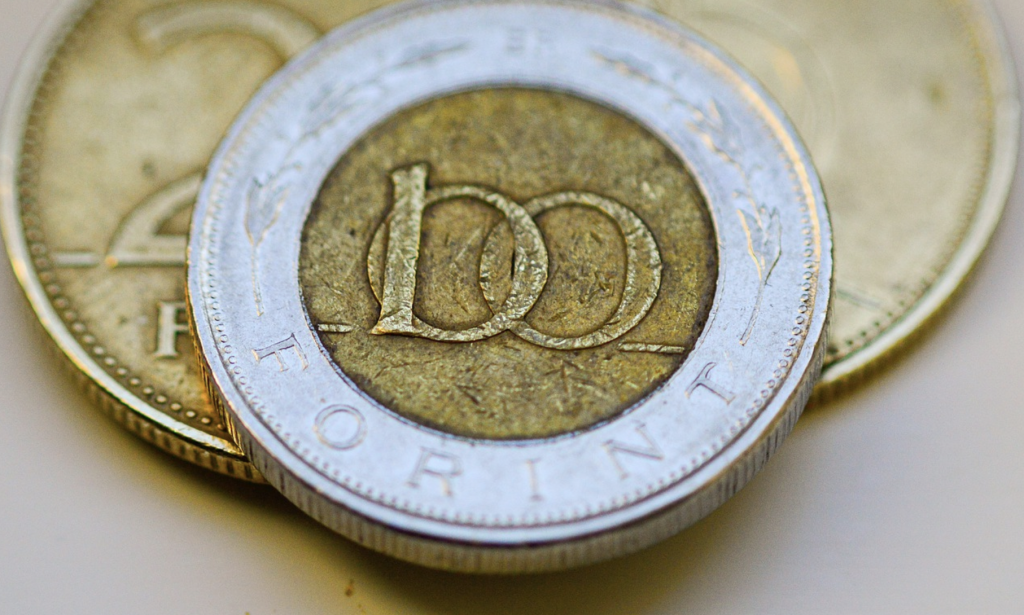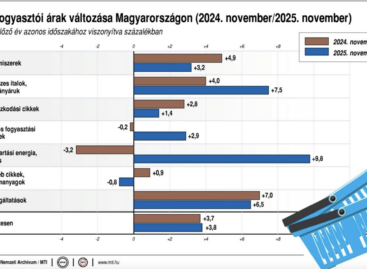Fidelity: Hungary will be less sensitive to pressure towards further devaluation of the forint
Inflation, central bank interest rates, energy prices – the countries of Central and Eastern Europe are reacting to the changes at a high pace, and the experts of Fidelity International looked at what can be expected in the Polish, Czech, Romanian and Hungarian financial markets.

Kétjegyű infláció
Double digit inflation:
In Poland, the consumer price index rose to 15.5%, and due to the rise in energy prices, it will probably remain around 15-19% in the third and fourth quarters of 2022 and the first quarter of 2023 before another decrease. However, according to Fidelity, it seems unlikely for the time being that it will fall to the 3-4% predicted by the Polish National Bank by the end of next year, as core inflation (that is, inflation calculated without energy and food prices) is also 9%, and it is likely to exceed 10% even with rapidly declining Purchasing Managers’ Indexes (PMIs) and economic confidence.
The picture is very similar in the Czech Republic and Hungary: Inflation is 14-18%, core inflation is above 14%, and until recently a generally supportive fiscal and monetary policy prevailed, which was good for demand and wages. A sharp slowdown or even a mild recession may be needed to curb inflation, which could occur in the third quarter.
Central bank base rates – late reaction
CEE central banks reacted very late to tight labor markets and rising inflation – especially as labor markets were tighter and wages rose faster than in other OECD countries. That means they had to catch up in 2022, and they did make some quick hikes – although not nearly enough, as bank rates are still well below inflation. Due to the economic slowdown expected for the second half of the year, according to bond market estimates, Poland and the Czech Republic will not come close to expectations – the market priced the following by the end of 2022: 12% in Hungary (currently: 9.75%), 7% in the Czech Republic, 25% (currently: 7%), and in Poland 7% (currently 6.5%).
Even if the Czech and Polish central banks were willing to increase more than what the market has priced in (towards 7.5-8% base rates), this would still mean very negative real interest rates in these, exceeding -10% (!) countries for the next 9-12 months. Along with a worsening current account, driven by rising gas import bills, chemical shutdowns and auto production still not operating at full capacity, as well as a growing budget deficit due to defense spending and the need to subsidize heating/electricity for consumers, Fidelity experts they believe that this background is very unfavorable for PLN and CZK.
In Hungary, the interest rate hikes implemented at a “deathly pace” over the past two months will probably bring the base interest rate closer to the level of the consumer price index. Thanks to the expected increases to 12-13% in 2023, keeping pace with the rise of the consumer price index, and also because it has already overcome most of the inconveniences from the exchange rate drop, Hungary will be less sensitive to further devaluation pressure than the Middle East. European counterparts.
What can be expected in Hungary?
After the consumer price index in June was unexpectedly high at 11.7%, the MNB took a hit and raised the deposit rate and the base rate by 200 basis points in mid-July and by another 100 basis points at the last meeting of the month. The markets did not expect such a strong reaction from the MNB. After that, with inflation in June spiraling even higher (13.7% while core inflation was 16.7%), the position did not change and remains hawkish, as the MNB focuses more on short-term exchange rate stability than medium-term economic slowdown. Therefore, Hungary’s local markets have now priced in more risk premiums than any other country in the region. Uncertainty continues to surround EU funds and the Russian-Ukrainian conflict – the latter has an impact on gas deliveries to the country, especially in relation to the winter months. On the other hand, however, food prices included in the CRB index consistently showed signs of easing pressure, as did the UN/FAO food industry price index, which is closely followed by the Central and Eastern European food basket in the consumer price index.
A very hot summer and European droughts could change this picture, but the first signs of the start of Russian/Ukrainian grain exports could offset this. Since the EUR/HUF exchange rate returned to the 400 level after the currency crisis preceding the interest rate hike, the spillover of the exchange rate drop to the consumer price index is expected to be moderate in the coming months. Therefore, any positive news related to the EU and Hungary or moderate stability of the EUR/HUF exchange rate can be beneficial for trade. In summary, Hungary’s local markets have priced in more premiums as the markets react to increasingly strict central bank measures. Uncertainty about EU resources and gas prices.
Related news
The Hungarian Confederation of Economic Workers also spoke out regarding the inflation data
🎧 Hallgasd a cikket: Lejátszás Szünet Folytatás Leállítás Nyelv: Auto…
Read more >Ministry of Agriculture supports the food industry’s adaptation to new challenges
🎧 Hallgasd a cikket: Lejátszás Szünet Folytatás Leállítás Nyelv: Auto…
Read more >Companies are getting tired, individual entrepreneurs are getting stronger – October company trend in light of the new tax package
🎧 Hallgasd a cikket: Lejátszás Szünet Folytatás Leállítás Nyelv: Auto…
Read more >Related news
The Hungarian Confederation of Economic Workers also spoke out regarding the inflation data
🎧 Hallgasd a cikket: Lejátszás Szünet Folytatás Leállítás Nyelv: Auto…
Read more >KSH: in November, consumer prices exceeded the values of the same month of the previous year by an average of 3.8 percent
🎧 Hallgasd a cikket: Lejátszás Szünet Folytatás Leállítás Nyelv: Auto…
Read more >In addition to jelly and marzipan Christmas candy, there are more and more specially flavored Christmas desserts on offer
🎧 Hallgasd a cikket: Lejátszás Szünet Folytatás Leállítás Nyelv: Auto…
Read more >






